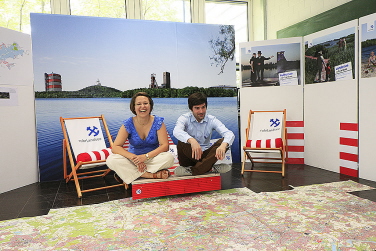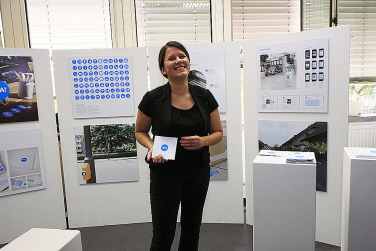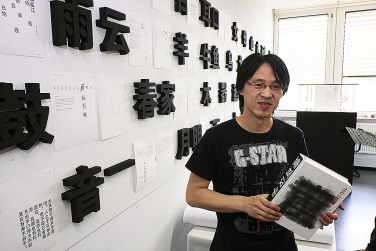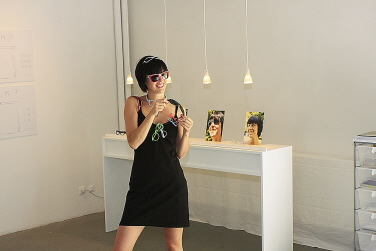Of comrades under sail on "Lake Ruhrland" and other "A-Ha!" moments - graduands present ground-breaking work
(sf) Water sports, swimming, rambling and pure relaxation in the middle of the Ruhr? Don't laugh! This vision is easily imaginable for Sylvia Skarbek and Johannes Loncarevic. The tourist guide for 2019 has already been prepared, even visiting cards and letterheads featuring the logo with the miner's hammer and an anchor are ready. A complete communication concept, under which "comrades under sail" could become a synonym in future for the old coal-mining area. In theory, the idea put forward by the two graduates would only require 70 times the volume of water in Lake Baldeney to be pumped out of the former underground mines to create Lake Ruhrland, which would then extend from the Centro complex in Oberhausen along the river Emscher as far as Herne-Crange. "A lake is exactly what the people in the Ruhr need. Gastronomy, surfing and sailing schools, hotels and wellness facilities would also generate new jobs", argues Sylvia, in justification of the imaginative concept. Whether the project will ever be implemented is open to question, a minor matter is that 42,000 people still live there. Yet Johannes offers words of reassurance: "Gelsenkirchen isn't about to be submerged".
"A-Ha! – welcome to Germany"
"Lake Ruhrland" was just one of 67 theses submitted on the communication design course. 57 pieces of work, including a Bachelor thesis and 8 works from the sphere of applied arts and design were presented to the general public by the new post-graduates for three days from 16th to 18th July. An enthralling, enriching journey through the world of communication concepts and art for the several hundred visitors.
The Dean, Prof. Dr. Stefan Asmus, praised the many outstanding contributions when he noted: "Design is not surface cosmetics here, the content is the focus of all the works". That of Sophie Barahona, for instance. She came up with pictograms for a communication system to help migrants to get to grips more easily with the small, yet often important, cultural details in everyday life. "A-Ha" is the title that the graduand gave to her work. And the A-Ha effect kicks in when the user touches the icon for money on, say, an I-Phone or a public information display point, and finds out that "one does not speak about money". She developed 70 signs, all in blue with white symbols. Some humorous, although all profound, she has been able to render a code of etiquette for typical German mannerisms or images. Apart from stickers, she has also designed an accompanying manual which could, perhaps, be laid out in public offices.
"100 Hanzi"
The work of Li Liang was also concerned with signs. The graduate communications designer demonstrated his concept and draft of a communication system for Chinese characters (Hanzi) in an eye-catching work extending over more than 700 pages. In this quite expansive and high quality exhibit, he explains - in German - the origin, history and meaning of over 100 calligraphic characters taken from his native language. Even going into the poetry which lays behind the development of some of the characters, he succeeds in capturing the reader. Each of the Chinese characters in question are bound into the informative book on original Chinese rice paper and awake interest in what for Europeans is still a rather strange script and language.
"50's revival"
Frills, tucks and pleats – Julia Miltenberger has given the colours and fabrics a new accent and has even revived the hula-hoop. This time, however, it is not intended as an article to train a slim waist, but rather as an up-to-the-minute XXL bag. To this end, she covered the two halves of the hula-hoop with fabric and turned it into a business-shopper carrier. Her chains - reminiscent of the garters Grandma once wore - are likewise offbeat. Classical spectacles from the 1950's inspired Susanne Heckwolf in her thesis. She refined the glasses and turned them into a multifunctional talent, whereby they can be worn as a necklace, as a hair band or even as a broach as the occasion demands.



